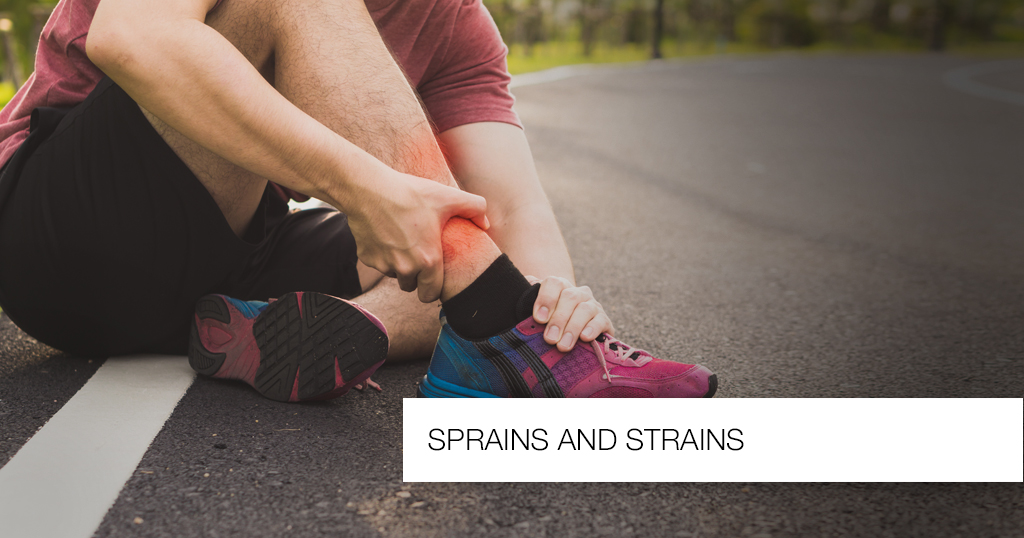

Strains and sprains are common injuries that can occur during hectic physical activity.
Sprain and strains are often used interchangeably to describe tearing or overstretching of soft tissues in and around the joints. There is a key difference and, knowing what it is can help you distinguish between joint sprains and strains.
Strains are injuries that affect muscles or tendons (thick bands that attach muscles to bones). They occur in reaction to a quick tear, twist, or pull of the muscle. Strains usually result from overstretching or over contraction.
Typical symptoms experienced during or after a strain are pain, weakness, and muscle spasms. Strains commonly occur in the back, neck, groin and hamstring. Back strains are said to be the most common reason for back aches.
Sprains are injuries that involve ligaments (thick bands of cartilage that attach one bone to another). Occurring in response to a stretch or tear of a ligament, sprains can range from a mild ligament stretch to a complete tear.
Common symptoms experienced after a sprain include bruising, swelling, instability and painful movement.
Common symptoms of sprains
Common symptoms of strains
Sprains usually result from traumas like a fall or an external force that displaces the surrounding joint from its normal alignment. Sprains are usually graded as I, II or III depending on severity and grades I and II can be treated conservatively with ice and basic physiotherapy while grade III sprains need more intensive treatment and even surgical procedures in some cases to avoid risk of permanent damage and joint instability. Sprains are usually caused during sports or running, hiking and the like. A twisted ankle is a classic example of a sprain. Knee and ankle sprains are the most universally observed sprains.
While anyone at any time can experience a strain or sprain, certain risk factors rise odds for overstretching a joint. Such risk factors are:
Lack of proper training or conditioning leaves our joints and muscles weak incapable of fully supporting our movements.
Warming up and cooling down are important after exercise or any athletic activity. This helps in preventing injury. While, warming up before workouts gently stretches the muscles and increases the range of motion, cooling down stretches help relaxes muscles for better joint support.
Ill-fitting or worn-ot equipment will increase the risk for a strain or sprain. It is important to keep our shoes and any necessary gear well maintained.
Both sprains and strains can occur while participating in sports like football, basketball, tennis and even in daily activities. At times, repetitive activities that exert the body might also cause a strain. Strains and sprains exhibit similar symptoms of bruising, swelling and pain experienced in varying intensities depending on the degree of injury.
Back strains are especially prevalent nowadays on account of long hours spent working at a desk on a laptop or computer. Without realising, we expose our limbs and back to long periods of no movement and little exercise thereby allowing room for sprains and strains to creep in.
Rest, ice, compression and elevation are the basic treatments for strains and sprains unless they’re so severe that a physician’s consult becomes essential.
Regular exercise and stretching, ensuring a proper warm up before playing a sport are known preventive measures for sprains and strains.
Walking around for a few minutes every hour or so, stretching, relaxing and contracting muscles every hour or two helps keep the body in use and reduces susceptibility to strains and sprains.
Use of comfortable equipment, especially chairs specially designed to reduce fatigue and exertion are also helpful in avoiding strains and sprains.
Our expert general medicine specialists verify the clinical accuracy of the content to deliver the most trusted source of information, making the management of health an empowering experience.
